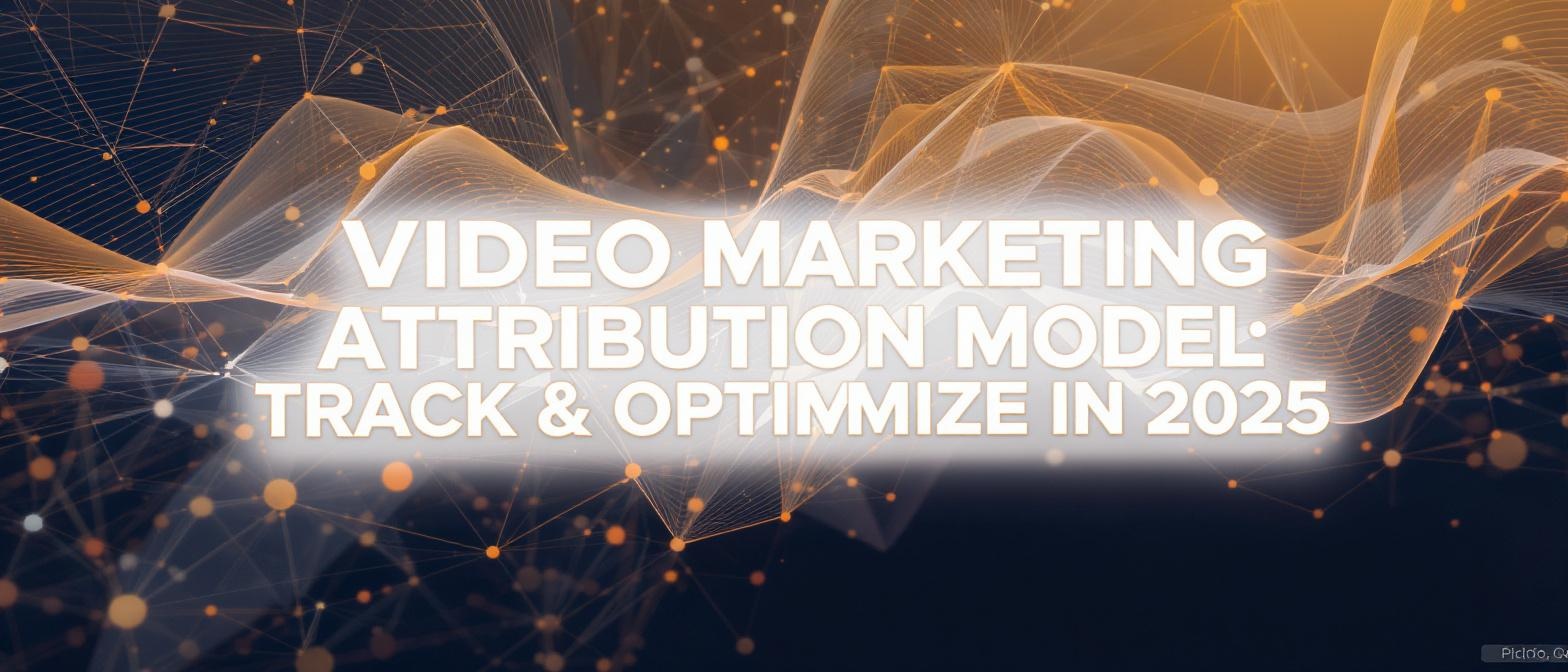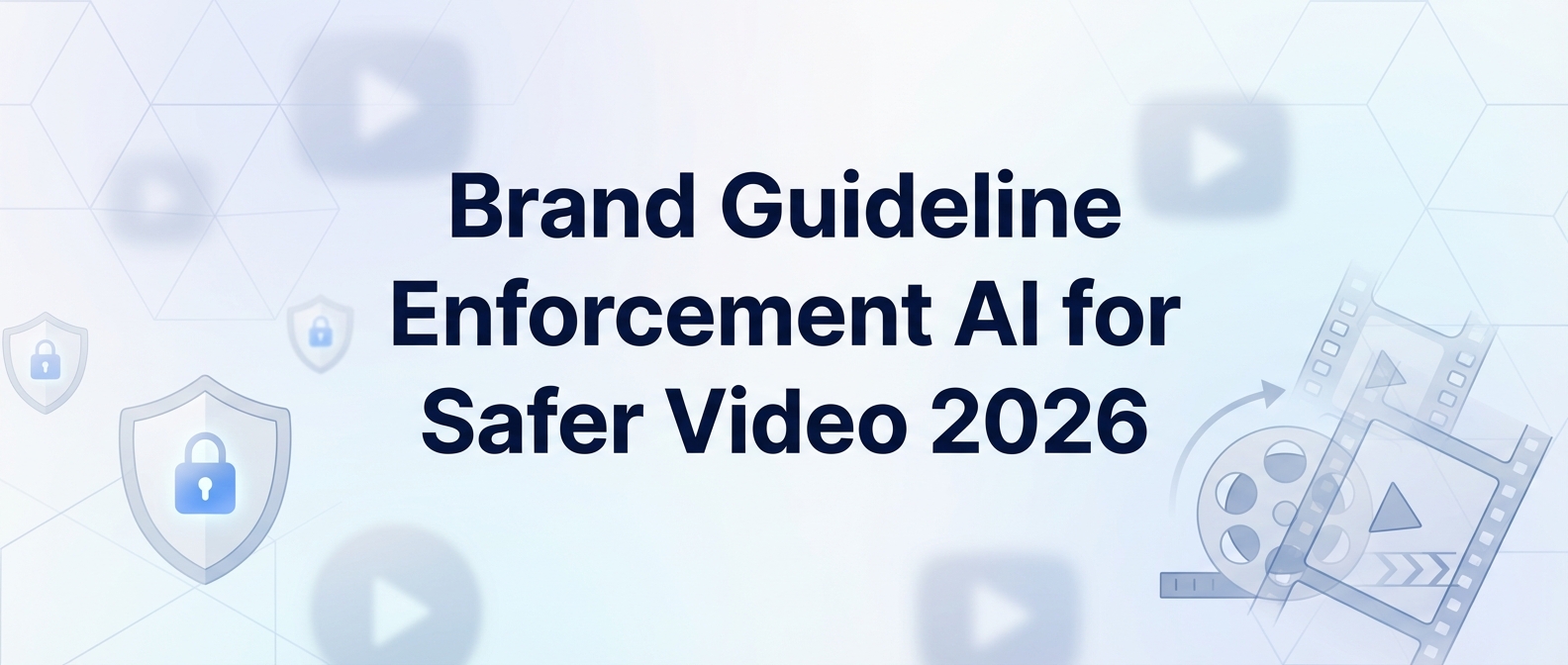Video Marketing Attribution Model: How to Track & Optimize Video Impact in 2025
Estimated reading time: ~12 minutes
Key Takeaways
- Implementing a robust video marketing attribution model is essential for tracking ROI
- Data-driven attribution reveals which video touchpoints truly drive conversions
- Shoppable and personalized videos are major 2025 trends that demand advanced analytics
- Platforms like TrueFan AI enable hyper-personalization at scale
In the fast-paced world of digital marketing, video reigns supreme. With consumers watching over two billion video views on social platforms daily, the need for precise measurement has never been more critical. Yet, many marketers still struggle to connect video engagement to tangible business outcomes, leaving a significant gap in their video campaign ROI tracking.
A video marketing attribution model provides the solution. It is the essential framework for assigning credit to each video touchpoint that guides a customer toward a conversion. This ensures that every dollar is spent on the most effective video assets. This guide will show you precisely how to measure video's influence on conversions, leveraging advanced attribution analytics video techniques to prove and improve your ROI in 2025. Video Personalization Analytics Platform
2025 Trends in Video Marketing Attribution
The landscape of video marketing is evolving at an unprecedented pace. To stay ahead, marketers must adapt to emerging trends that are redefining how we measure success. These shifts demand a more sophisticated approach to the video marketing attribution model, moving beyond simple metrics to a holistic understanding of video's impact.
Shoppable Video Content Takes Center Stage
The line between content and commerce is blurring. Shoppable videos, which allow viewers to make purchases directly within the video player, are set to transform e-commerce. Accelerated Digital Media projects that these commerce-enabled videos will drive a stunning 20% uplift in session-to-purchase rates by the end of 2025, making direct attribution from view to sale more critical than ever.
Data-Driven Attribution Becomes the Default
Guesswork is no longer an option. Platforms like Google Ads now default to data-driven attribution, a model that uses machine learning to distribute credit across all relevant touchpoints, including video and display ads. This algorithmic approach provides a more accurate picture of what's truly driving conversions, forcing marketers to refine their video campaign ROI tracking. Video Personalization ROI Metrics
AI-Generated Visuals & Personalization Accelerate Testing
The rise of AI-powered tools is revolutionizing video creation and optimization. Technologies that enable instant image-to-video generation and real-time API-driven video personalization are accelerating creative testing. Marketers can now deploy multiple video variations and use attribution analytics video to gain rapid insights into what resonates with specific audience segments. Video Personalization Analytics Platform
Hyper-Personalization at Scale Becomes a Reality
Enterprise brands are now deploying personalized videos on a massive scale, with some creating over a million unique videos per day. This level of customization, addressing viewers by name or referencing their specific behaviors, demands advanced attribution analytics. Tracking the performance of these hyper-personalized campaigns is essential to justifying the investment and optimizing for maximum impact. Platforms like TrueFan AI enable this by seamlessly integrating data to create and track millions of unique video experiences.
Source: Accelerated Digital Media, Google Ads Help, EasyInsights.ai
Understanding Video Marketing Attribution
A video marketing attribution model is a structured set of rules that allocates credit for a conversion across various video interactions in a customer's journey. This could include the first awareness-stage video they viewed, a mid-funnel explainer video, and the final personalized video with a compelling call-to-action. Without this framework, you're flying blind.
Proper attribution matters because it connects video views, clicks, and engagements directly to revenue. It eliminates guesswork when optimizing marketing budgets, allowing you to confidently double down on what works and cut what doesn't. When you can prove that a specific video series shortened the sales cycle or increased average order value, you transform video from a creative expense into a measurable revenue driver.
Ultimately, without a clear attribution model, marketers cannot measure the true ROI of their video efforts or identify underperforming assets that drain resources. This lack of insight makes it impossible to strategically scale video campaigns and demonstrate their value to key stakeholders.
Source: aerospike.com/blog/what-is-attribution-modeling/, mountain.com/blog/marketing-attribution-models/
Key Attribution Models for Video
Choosing the right attribution model is crucial for accurate attribution analytics video. Different models offer varying levels of insight, from simple single-touch methods to sophisticated, data-driven approaches. Understanding each one helps you select the best fit for your campaign goals.
Single-Touch Models
These models assign 100% of the conversion credit to a single video touchpoint. They are simple to implement but often provide an incomplete picture.
- First-Touch Attribution: Gives all credit to the very first video a customer interacted with. This model is useful for understanding top-of-funnel channels that generate initial awareness but completely ignores all subsequent interactions that nurtured the lead.
- Last-Touch Attribution: Assigns all credit to the final video viewed before a conversion. This highlights what content is effective at closing deals but fails to recognize the videos that introduced the customer to your brand and guided them through the consideration phase.
Multi-Touch Video Attribution
Multi-touch models distribute credit across multiple video touchpoints, providing a more holistic view of the customer journey.
- Linear Model: This model gives equal credit to every video interaction. It acknowledges that each touchpoint plays a role, offering a balanced view, but it can dilute the impact of a particularly influential video.
- Time-Decay Model: More credit is given to interactions that happen closer to the time of conversion. This model reflects the idea that touchpoints nearer to the purchase decision are more influential, which is often true in shorter sales cycles.
- Position-Based (U-Shaped) Model: This hybrid model assigns 40% of the credit to the first touchpoint, 40% to the last touchpoint, and distributes the remaining 20% evenly among the interactions in between. It effectively values both the initial awareness-driver and the final conversion-driver.
Data-Driven Attribution
This is the most advanced model. It uses machine learning and statistical analysis of your actual account data to determine how much credit each video touchpoint should receive. By analyzing the paths of both converting and non-converting customers, it identifies the most impactful patterns and assigns credit accordingly, offering the most accurate and dynamic view of multi-touch video attribution. Video Personalization Analytics Platform
Source: Shopify India, UnboundB2B, windsor.ai/benefits-attribution-modelling/
Video Campaign ROI Tracking Techniques
Effective video campaign ROI tracking requires a combination of the right tools and a systematic workflow. The goal is to connect video engagement metrics directly to bottom-line business results like leads, sales, and revenue.
A typical workflow involves several key steps. First, you must tag every video URL with unique UTM parameters (e.g., utm_source=YouTube, utm_medium=video, utm_campaign=spring_launch). This allows analytics platforms to identify exactly where your traffic is coming from.
Next, you need to capture key engagement events. Using a tool like Google Tag Manager, you can track when viewers press play, watch 25% or 50% of your video, or click a call-to-action. These events provide a much deeper understanding of engagement than simple view counts.
Finally, you map these engagement events to your conversion goals within a platform like Google Analytics 4 (GA4). By applying your chosen attribution model, you can see precisely how video interactions contribute to valuable outcomes like form fills or purchases. The key is to create dashboards that tie video spend directly to revenue, enabling continuous budget reallocation to your top-performing videos and channels.
Source: mountain.com/blog/marketing-attribution-models/
Personalized Video Conversion Tracking
Personalized video takes marketing from a one-to-many to a one-to-one conversation. These are dynamically generated videos that can address each viewer by name, reference their recent browsing behavior, or include other personal details (e.g., “Hi Priya, that blue dress you viewed is back in stock!”). This level of customization drives significantly higher engagement and conversion rates.
Tracking the impact of these videos requires a specific methodology. The most effective approach for personalized video conversion tracking involves embedding a unique viewer ID within the video's metadata. When the viewer completes the video or clicks a CTA, a conversion event is fired and tied back to that specific ID. Video Personalization API Guide
This allows marketers to attribute a lift in conversion rates directly to the personalized elements. For example, a compelling case study from Indeed.com found that personalized product demo videos delivered via email saw a remarkable 3x higher click-through rate compared to their generic counterparts. This demonstrates the power of combining personalization with precise attribution.
Source: indeed.com/career-advice/career-development/marketing-attribution
Video’s Influence on the Sales Pipeline
Video is not just a top-of-funnel tool; its influence extends across the entire sales pipeline, from initial awareness to closing the deal. A strategic video marketing attribution model reveals how different types of video assets nurture leads through each stage.
- Awareness: Short, engaging explainer videos on social media or your homepage introduce your brand and product to a broad audience.
- Consideration: In-depth comparison videos, customer testimonials, or webinar recordings help prospects evaluate your solution and qualify themselves as leads.
- Decision: Highly personalized demo videos or a final CTA from a brand ambassador can provide the final push needed to close the deal.
To truly measure this video influence on pipeline, you must integrate your video analytics with your CRM system, such as Salesforce or HubSpot. By syncing video engagement scores (e.g., watch-through rates) to lead records, your sales team can prioritize follow-ups with the most engaged prospects. This integration also allows you to build attribution models that reveal which video assets are most effective at accelerating deal velocity and shortening the overall sales cycle.
Source: aerospike.com/blog/what-is-attribution-modeling/
Leveraging Attribution Analytics for Video
Once you have a solid attribution model in place, you can unlock a wealth of insights through advanced attribution analytics video. This goes beyond simply crediting conversions; it involves dissecting the data to fuel continuous optimization and strategic decision-making.
Start with advanced segmentation. Break down video performance by viewer demographics, device type, geographic location, and even creative variants. This can uncover hidden trends, such as a particular video resonating strongly with a specific audience segment on mobile devices.
Next, embrace predictive modeling. Use your historical video engagement and conversion data to forecast the potential performance of new video assets before you even produce them. This data-driven approach helps you invest your creative resources more effectively.
For a unified view, leverage API-driven reporting to pull video metrics directly into your business intelligence (BI) tools like Power BI or Tableau. This allows you to create comprehensive marketing-sales dashboards that show the full picture. The ultimate goal is to enable real-time analytics for agile campaign iterations, ensuring that underperforming videos are paused or tweaked immediately to maximize your overall video marketing attribution model effectiveness.
TrueFan’s Enterprise Capabilities for Video Attribution
For enterprise-level brands, tracking video impact requires a platform built for scale, speed, and sophistication. TrueFan AI's suite of tools is designed to address the most complex challenges in video attribution, from hyper-personalization to global localization.
Hyper-Personalization at Scale
TrueFan AI's engine can pull customer data from any source via API to generate millions of unique, one-to-one videos in under 30 seconds each. This capability, combined with TrueFan AI's 175+ language support and Personalised Celebrity Videos, drives unprecedented engagement, with view rates soaring up to 80% when a celebrity greets a viewer by name. This allows for precise personalized video conversion tracking, measuring the exact conversion lift from specific personalization elements.
Virtual Reshoots & A/B Testing
The platform's AI-powered speech and lip reanimation technology enables marketers to perform virtual reshoots, instantly tweaking messaging without the time and cost of a new production. This makes it easy to A/B test different calls-to-action (“50% off” vs. “Buy one get one free”) within the same video asset, using attribution data to determine which variant drives higher conversions.
Multilingual Localization
With the ability to auto-translate and reanimate content into over 175 languages with perfect lip-sync, TrueFan AI ensures brand consistency across global markets. This feature adds a critical layer to the video marketing attribution model, allowing marketers to compare localized video performance by language and region to inform geo-specific budget allocation.
Real-Time Personalization & Delivery
A low-latency pipeline delivers customized videos via email, WhatsApp, or in-app notifications within 30 seconds of a trigger event. Video open and watch-rate data can be integrated directly into CRM workflows, enabling instant lead scoring and follow-up, which directly improves video influence on pipeline velocity.
Analytics & Optimization
TrueFan AI provides robust dashboards that show view rates, watch-through data, and conversion lifts correlated to specific personalization elements. The platform offers continuous optimization recommendations—for example, suggesting a name mention be moved to the first five seconds for a projected +12% increase in watch-through rates—perfecting video campaign ROI tracking.
Compliance & Security
Operating at an enterprise scale demands uncompromising security. TrueFan AI is ISO 27001 and SOC 2 certified, employing a consent-first celebrity model and built-in content moderation to ensure brand safety. This guarantees that all attribution data and customer PII are handled under the strictest enterprise-grade data governance standards, making attribution analytics video safe and reliable.
Conclusion & Call to Action
In 2025, a robust video marketing attribution model is no longer a luxury—it is a necessity. To accurately measure and optimize video's critical role in driving conversions and accelerating pipeline growth, marketers must move beyond vanity metrics and embrace a data-driven framework. By understanding and implementing the right models and tools, you can finally prove the immense value of your video marketing efforts.
Adopting advanced attribution analytics video is the first step. The next is to leverage technology that can scale your efforts effectively. Explore how TrueFan AI's enterprise solution for hyper-personalized, trackable video campaigns can transform your strategy and deliver unparalleled results. To learn more about our API integration and enterprise capabilities, connect with our team today. Effective video campaign ROI tracking is within your reach.
Frequently Asked Questions (FAQ)
Frequently Asked Questions
What is the most accurate video marketing attribution model?
The data-driven attribution model is widely considered the most accurate because it uses your specific account data and machine learning to assign credit based on how customers actually interact with your videos, rather than relying on predefined rules.
How does video attribution work with social media platforms?
Most major social platforms (like YouTube, Facebook, and TikTok) have their own built-in analytics that offer attribution insights. For a more holistic view, you should use UTM tags for all video links and integrate platform data into a central analytics tool like Google Analytics 4 to track the customer journey across channels.
Can I track the ROI of videos that are not clickable?
Yes. You can use brand lift studies, geo-based experiments, and post-view conversion tracking. For example, you can measure if conversions from a specific geographic area increase after a non-clickable video ad campaign (like on connected TV) is run in that region.
How can I get started with video attribution if I have a small budget?
Start simple. Use Google Analytics 4, which is free, and implement a consistent UTM tagging strategy for all your video content. Begin with a last-touch attribution model to understand what content closes deals, and as you gather more data, you can experiment with multi-touch models like the linear or position-based models.
How does a platform like TrueFan AI improve video attribution?
Solutions like TrueFan AI improve attribution by making video impact directly measurable at a granular level. By creating millions of unique, personalized videos tied to individual user IDs, the platform allows marketers to precisely track how specific personalization elements (like a viewer's name or location) directly influence engagement and conversion rates, providing clear, actionable data.




